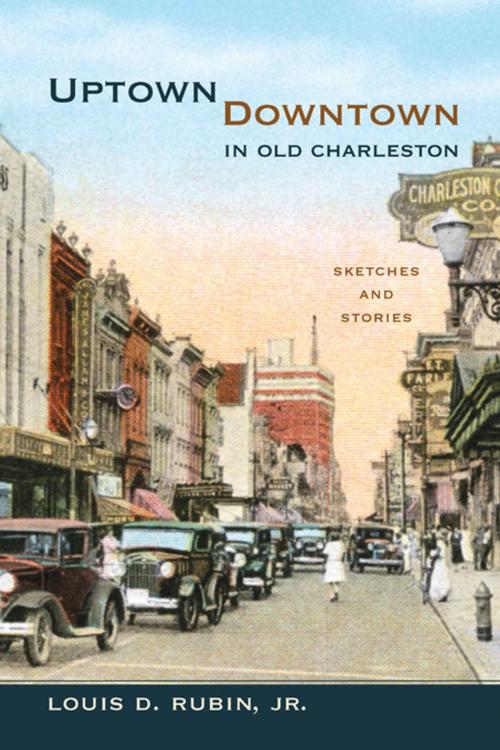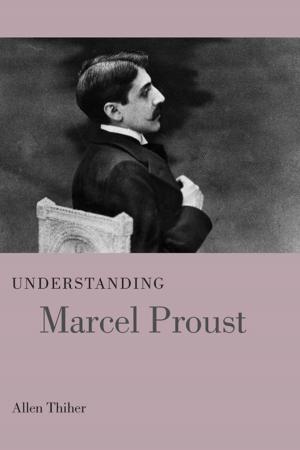Uptown/Downtown in Old Charleston
Sketches and Stories
Fiction & Literature, Religious, Short Stories| Author: | Louis D. Rubin Jr. | ISBN: | 9781611172683 |
| Publisher: | University of South Carolina Press | Publication: | June 7, 2013 |
| Imprint: | University of South Carolina Press | Language: | English |
| Author: | Louis D. Rubin Jr. |
| ISBN: | 9781611172683 |
| Publisher: | University of South Carolina Press |
| Publication: | June 7, 2013 |
| Imprint: | University of South Carolina Press |
| Language: | English |
Growing up in Charleston in the 1930s and 1940s, accomplished storyteller Louis Rubin witnessed firsthand the subtle gradations of caste and class among neighborhoods, from south of Broad Street where established families, ancestral glories, and traditional mores held sway, to the various enclaves of Uptown in which middle-class and blue-collar families went about their own diverse lives and routines. Changing circumstances within his own family impelled his absorption in what seemed to be two separate worlds, and granted him a remarkable perspective into Charleston's evolving identity as an historic seaport on the cusp of modernity during the Great Depression and the onset of World War II. Rubin's wide-eyed narrator takes readers on excursions to Adger's Wharf, the Battery, Union Terminal, the shops of King Street, the Majestic Theater, the College of Charleston, and other recognizable landmarks. With youthful glee he watches the barges and shrimp trawlers along the waterfront, rides streetcars down Rutledge Avenue and trains to Savannah and Richmond, paddles the Ashley River in a leaky homemade boat, pitches left-handed for the youngest team in the Twilight Baseball League, ponders the curious chanting coming from the Jewish Community Center, and catches magical glimpses of the Morris Island lighthouse from atop the Folly Beach Ferris wheel. His fascination with the gas-electric Boll Weevil train epitomizes his appreciation for the freedom of movement between the worlds of Uptown and Downtown. The collection ends with a homecoming to Charleston by our narrator, then a young man in his early twenties, as his inbound train is greeted by familiar vistas as well as by views he had never encountered before. This is the city Rubin called home, where there were always surprising discoveries to be found, both in the burgeoning newness of Uptown and the storied legacies of old Downtown.
Growing up in Charleston in the 1930s and 1940s, accomplished storyteller Louis Rubin witnessed firsthand the subtle gradations of caste and class among neighborhoods, from south of Broad Street where established families, ancestral glories, and traditional mores held sway, to the various enclaves of Uptown in which middle-class and blue-collar families went about their own diverse lives and routines. Changing circumstances within his own family impelled his absorption in what seemed to be two separate worlds, and granted him a remarkable perspective into Charleston's evolving identity as an historic seaport on the cusp of modernity during the Great Depression and the onset of World War II. Rubin's wide-eyed narrator takes readers on excursions to Adger's Wharf, the Battery, Union Terminal, the shops of King Street, the Majestic Theater, the College of Charleston, and other recognizable landmarks. With youthful glee he watches the barges and shrimp trawlers along the waterfront, rides streetcars down Rutledge Avenue and trains to Savannah and Richmond, paddles the Ashley River in a leaky homemade boat, pitches left-handed for the youngest team in the Twilight Baseball League, ponders the curious chanting coming from the Jewish Community Center, and catches magical glimpses of the Morris Island lighthouse from atop the Folly Beach Ferris wheel. His fascination with the gas-electric Boll Weevil train epitomizes his appreciation for the freedom of movement between the worlds of Uptown and Downtown. The collection ends with a homecoming to Charleston by our narrator, then a young man in his early twenties, as his inbound train is greeted by familiar vistas as well as by views he had never encountered before. This is the city Rubin called home, where there were always surprising discoveries to be found, both in the burgeoning newness of Uptown and the storied legacies of old Downtown.















